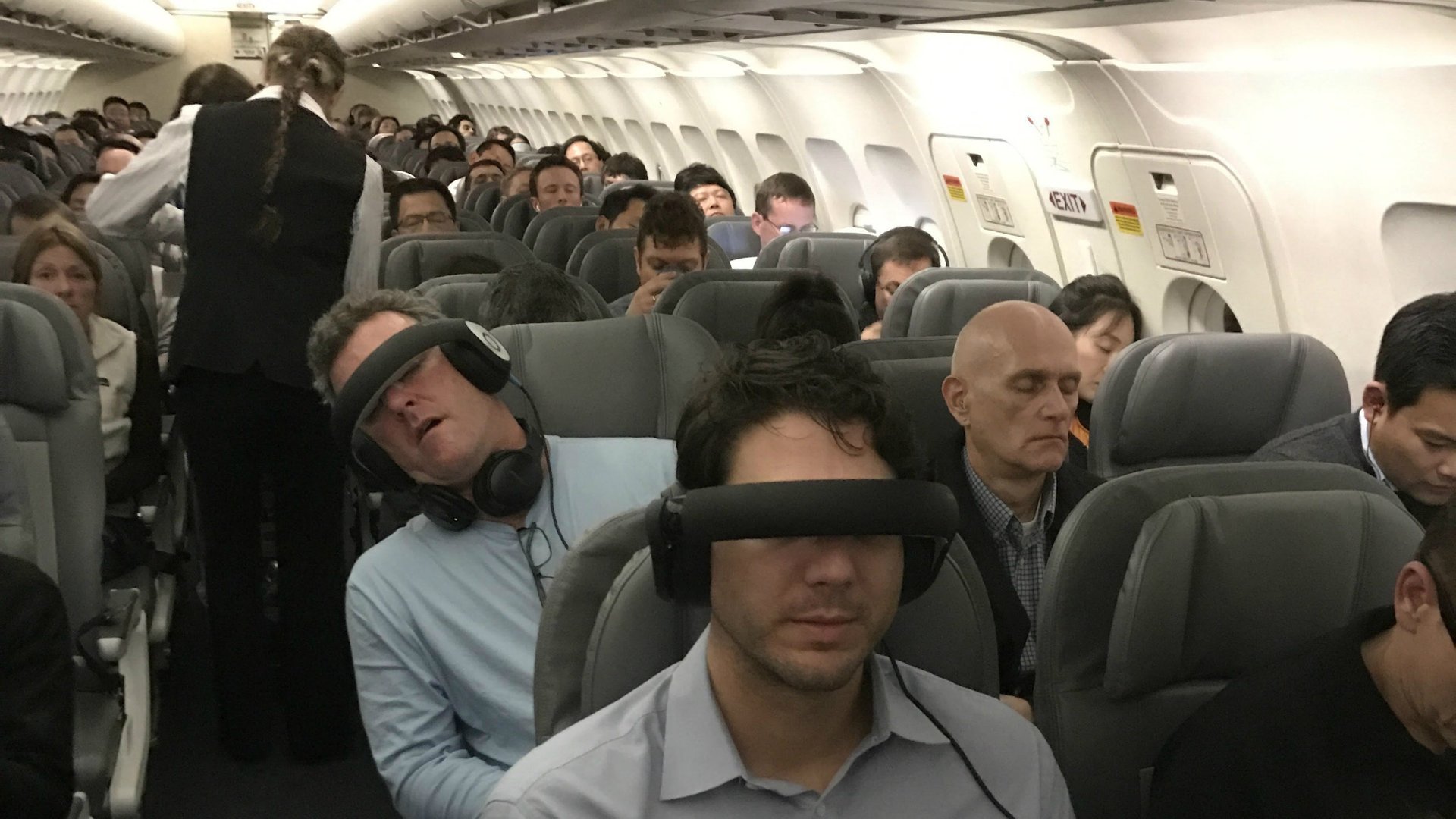To hide the dismal reality of flying, airlines are trying virtual reality on passengers
Unless you are swimming in frequent-flyer miles or money, there is little to love these days about commercial air travel. Seats have gotten smaller, legroom is scarce, and at least one airline this year will restrict overhead bin access for some fare classes.


Unless you are swimming in frequent-flyer miles or money, there is little to love these days about commercial air travel. Seats have gotten smaller, legroom is scarce, and at least one airline this year will restrict overhead bin access for some fare classes.
But better entertainment options could distract cramped passengers from the pains of traveling economy. Airlines’ latest offering: virtual-reality headsets.
United Airlines offered Glyph headsets (made by a Californian company called Avegant) on a few flights earlier this month between San Francisco and Las Vegas, where the Consumer Electronics Show was held. The headsets look like headphones flipped on their side and retail for $549. Users have a 360-degree view and can watch content in 3D. The content streams from a smartphone or tablet, which gives the viewer a greater degree of privacy on what they’re viewing compared to the old seat-back screen, or even a tablet resting on a tray table.
Other airlines have been getting in on the action. Last year, French airline XL Airways began renting VR headsets made by French startup SkyLights to passengers for $16; SkyLights says it has tested it with several other carriers, including Air France-KLM. The headsets allow users to watch movies in both 2D and 3D formats.
While the headsets may look and feel a bit silly at first—and raise questions about catching some dreaded germs from the last user, though at least you probably won’t have a fear of being mugged onboard—it does show how airlines are prioritizing passengers’ entertainment.
Delta Air Lines announced in June it would make in-flight entertainment free and JetBlue Jan. 11 announced it would make Wi-Fi free on domestic flights.